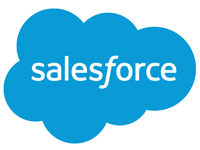Traditionally in this year-end piece, I peer into my cloudy crystal ball and forecast the year ahead in CRM. Sometimes I’m close, other times not, but either way, my predictions quickly are forgotten. This year, I’ve decided just to say what I want rather than what realistically might happen. Since my vote has all of the authority of yesterday’s news, it will follow the prognostications of years past.
I’m angling for a unified theory of CRM. It’s what my books have aimed for, and I think it’s about time for us to discuss it in concrete terms so that everyone gets it. You might think we already have a unified theory, but I see a lot of discussion of pieces and parts. In fact, I think CRM is more unified and powerful than most of its users give credit for. Consequently, I think we’re leaving money on the table.
Room for Growth
Nevertheless, the first thing we should note is that CRM is doing quite well. It’s a big market, and there’s still a lot of white space out there. More importantly, there’s so much innovation happening that the upsell and cross-sell potential in the installed base is both large and growing.
However, the way we’re approaching CRM is by its components. A component like artificial intelligence, conversational CRM, or whatever is new gets 15 minutes in the spotlight, and buyers have to figure out whether it’s appropriate for them before the next shiny object comes into view. This has worked well enough in the past, but the suite is so big now that perhaps some sales people are challenged to offer consistent pitches and comprehensive solutions.
The vendors are doing more or less what they should do, and this fits well with the old maxim of caveat emptor, or let the buyer beware. In other words, don’t look for the vendor to tell you why you should buy something beyond the obvious.
Want to do email marketing? Then get an email marketing system. Do you need email marketing, though? At some point the larger community of analysts like me should be doing more than stack ranking the email marketing systems (or whatever the topic is) based on some set of dreamed-up criteria.
Our job ought to include, in part, understanding business practices and matching them with product capabilities that go beyond the obvious. Many of my brothers and sisters do a great job at this, but the approach is far from universal.
A Unified Theory of CRM
Like every major professional space, business should go beyond the confines of things that relate to it directly. For instance, law borrows heavily from sociology, psychology, economics and other social sciences. Similarly, medicine draws from a wide array of adjacent areas — from social sciences to the lab sciences, and not just the pathology lab either.
In business, however, we look at technology too often as the stuff that accelerates business practice not often enough as the stuff that provides better or truer outcomes. Perhaps that comes from the twin imperatives that a business do things either to make or to save money.
Other professions are morally, ethically, and in some cases legally bound to focus on the customer. That doesn’t exist in business, and all the things you can cram under the heading of “stakeholders” occupy a lower level in the hierarchy.
As important as it is to make and save money, no business can survive for long without paying attention to customer welfare, and that’s why I’m advocating for what I’ll call a “unified theory,” for now. Some leading figures are writing in the business journals about “business agility,” which incorporates customer focus and profits under one heading — but it’s a long way from this theory to real practice.
A unified theory of CRM would take the pressure off a business trying to figure out how to relate to its customers. I think it might even help clarify what the business does, and which tools might improve customer outreach.
Pedal to the Metal
Today, instead of a unified theory of CRM, new product introductions often come with the thinly veiled promise to help speed up a process, usually sales or service. There’s nothing wrong with that if you can do it, but my experience suggests that acceleration might not be possible in some areas, or it simply might be undesirable.
With all of the new ways we have of communicating asynchronously, acceleration seems nearly impossible. Interestingly, however, recent advances in things like conversational CRM have begun to advance synchronous communication for the first time since the widespread use of the telephone.
So, I am optimistic about the year ahead, though my reasons for optimism are somewhat diffuse. Nonetheless, with so many bases now covered by the modern CRM suite, the idea of a unified theory of how best to use it makes all the sense in the world to me. I’ll spend much of next year explaining this, I am sure.
Thanks for reading, and Happy Holidays!






















































